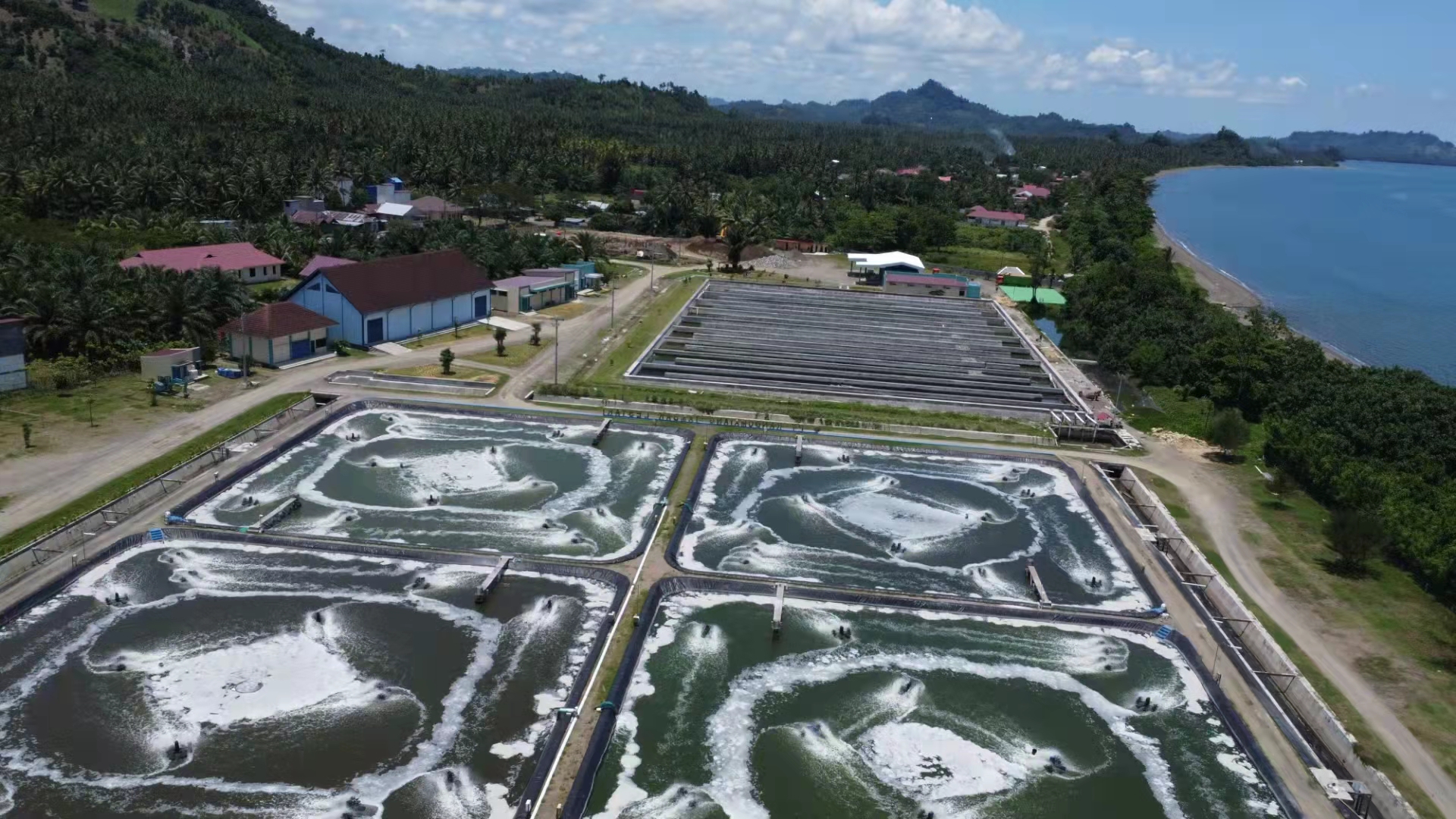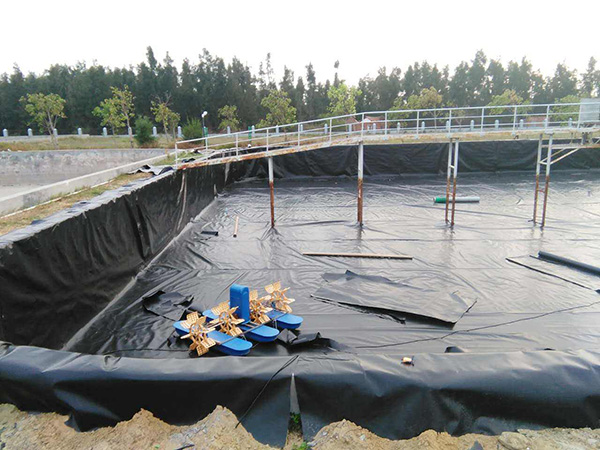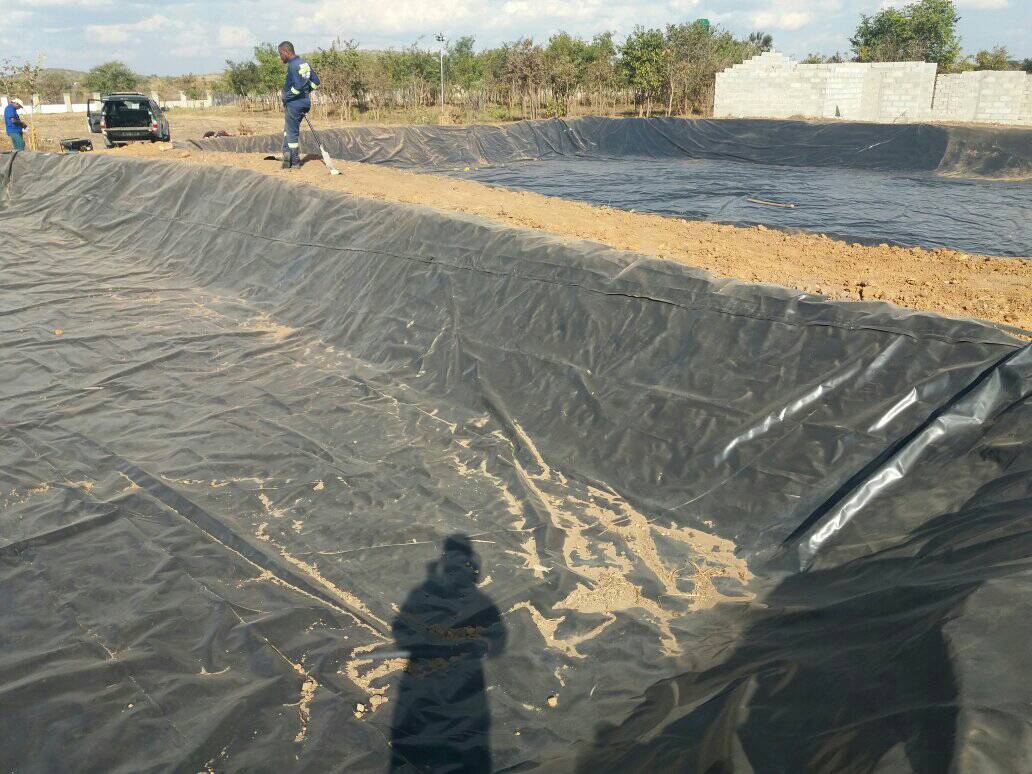Evaluating pond liners for shrimp farming
Increased yearly cycles, aeration rates, and stocking densities have all enhanced production efficiency.

In shrimp aquaculture operations, pond liners can increase output efficiency.
Due to the availability of brackish or seawater for supplying ponds, shrimp production is usually conducted in coastal areas. Furthermore, some of the land is swampy or sandy, and organic soils may be present. Because such land is unsuitable for crops or plantations, it is available at a low cost.
Ponds built in iron pyrite-containing soils (potential acid-sulfate or active acid-sulfate soils) have a low pH, which is problematic for shrimp culture. Ponds constructed in sandy soil do not retain water efficiently.
Organic soils have a high oxygen demand and do not allow for stable embankments. Because of the low-lying ground, drainage and drying after harvest are challenging for shrimp ponds built in these places. Pond bottoms do not entirely dry up, and after a few crops of culture shrimp, the pond bottom deteriorates, stressing shrimp and favoring disease outbreaks.
The practice of separating pond water and soil with plastic pond liners is one of various management systems that can be adopted, and it has historically produced the best, most cost-effective results in shrimp farming. For agricultural purposes, plastic pond liners has long been employed in reservoirs, dams, and ponds.
However, it has only been a few years since this technique has been widely used in aquaculture.
HDPE (high density polyethylene) and PVC (polyvinyl chloride) are two plastics that can be used to shrimp ponds . Both HDPE and PVC contain anti-ultraviolet chemicals, making them resistant to UV radiation damage and allowing them to persist for many years. These materials are lightweight and come in rolls that can be easily fused or glued together during installation. The shrimp pond liner thickness can be 0.2mm, 0.3mm, 0.4mm, 0.5mm, 0.75mm, and many HDPE and PVC liners come with a five- to ten-year warranty when used under typical conditions.
Such as 0.35mm from some suppliers,its service life is 3 years.
But GERUI 0.35mm HDPE geomembrane has 5 years warranty,can be used for 5 years.
Such as 0.5mm from other suppliers,its service life is 5 years.
But GERUI 0.5mm HDPE geomembrane has 8 years warranty,can be used for 8 years.
Here is a question that many people are asking, HDPE or PVC, which one is better?
Q: What is the difference between HDPE Pond liner and PVC Pond liner?
PVC, also known as polyvinyl chloride, is a highly flexible product that is safe for plants and fish, But HDPE is relatively cheaper and safer for plants and fish.
Why HDPE:
· Extremely Strong
· Chemical resistant
· Tear resistant
· Easy to Seal
· Economical
· Long Lasting and highly durable

Lined shrimp fish farming ponds that are well-designed, built and managed can efficiently manage organic matter and sludge.
 Advantages
Advantages
The use of HDPE geomembrane to line pond aquaculture bottoms and embankments eliminates interaction with acid-sulfate soils, which would otherwise cause issues in shrimp ponds, especially during rainy seasons.
Because there are no detrimental effects on pond water quality from interaction with bottom and dike soils, pond water quality is easier to control. Pond liners successfully inhibit soil-water interaction, preventing soil acidity, stopping salinization of nearby areas, and controlling seepage of water into ponds in high-water-table places.
Pond liners reduce the time it takes to clean and prepare a pond, taking only four to eight days as opposed to 30 to 45 days for a traditional earthen pond cleaning and substantial drying procedure. As a result, the number of crops per year can be increased, resulting in improved annual pond productivity. Furthermore, because the HDPE liner pond can still be cleaned throughout the wet season, harvesting can be more successful. After the pond liners are put, no tractor earthwork is necessary.
Suspended particles and other waste can be easily removed by gravity flow through drains (usually in the center of the pond) during the culture phase, resulting in less organic matter accumulating in the ponds.
Pond liners minimize pond maintenance and repair costs by preventing dikes and levees from being eroded by waves, wind, and aerator-generated water currents. Furthermore, lined ponds can be aerated more effectively, allowing for larger stocking densities and yields per unit area.
Because the pond bottom is cleaner, there are fewer shrimp with dirty gills (absorption of organic sludge) at harvest time, and cleaner shrimp attract higher prices.
Disadvantages
To begin with, pond HDPE lining expenses can range from $10,000 to $100,000 or more, depending on the type of liner used, the size of the pond, and other factors. Before the next manufacturing cycle can begin, pond cleaning and preparation will necessitate a significant amount of manual effort and/or equipment. Because of the risk of harming the pond liner, heavy machinery is not allowed to clean the pond after harvest.
In lined ponds, establishing a plankton bloom before loading shrimp postlarvae can be more challenging. Phosphorus increases in pond waters as the culture period goes, and phytoplankton blooms tend to increase. This can result in low dissolved oxygen levels at night and plankton die-offs, both of which can lead to dissolved oxygen deficiency.
In lined ponds, more mechanical aeration may be necessary than in ponds without liner, especially during the second half of the culture period, because of the frequent occurrence of higher phytoplankton blooms and related problems with dissolved oxygen depletion.
Requirements before installation
To correctly line a pond, the soil must be flat and compacted, and sharp or extraneous items such as boulders, tree stumps, and branches must be removed over the surface of the pond bottom and up along all internal slopes of the embankments. If you're going to use a central drain, which is highly recommended, make sure it's correctly built and installed.
The HDPE sheets must be lined along the smooth surface of the pond bottom and dike, and they must be secured on the top of the dike by burying the edges in a 50 cm trench in the dike.




